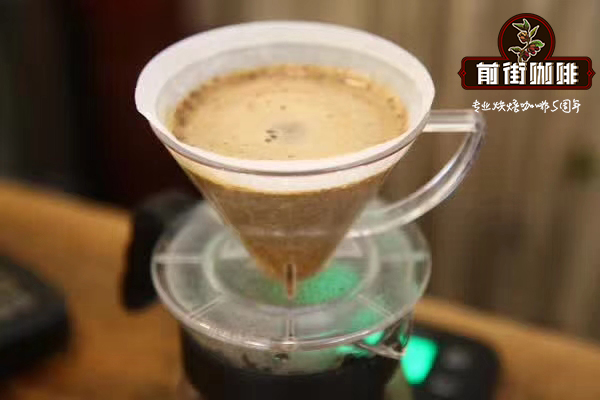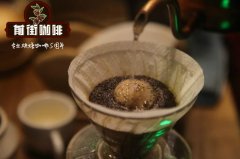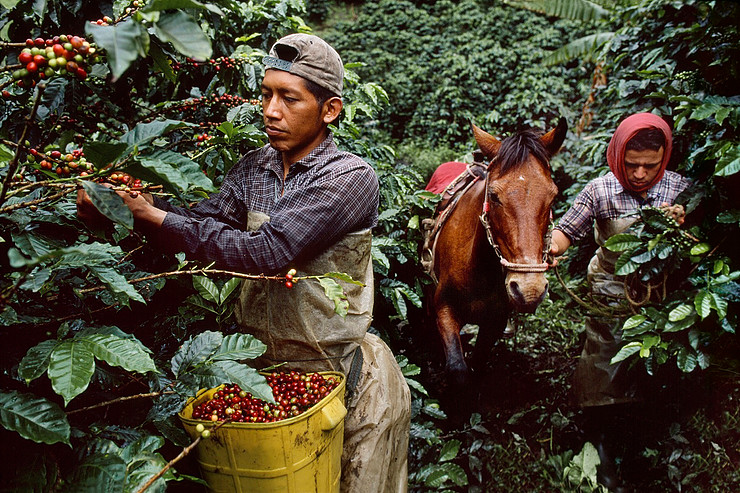Description of Flavor characteristics of World famous Ethiopian Coffee producing area
The world-famous Ethiopian coffee is mainly:
Limu Coffee: grows between 1400 and 2000 meters above sea level. Wash the coffee. It has a strong nutty aroma, suitable acidity and the intensity of wine.
Gima Coffee: grows between 1400 and 1800 meters above sea level. Sun-baked coffee. Slightly sour, with nutty aromas and a long finish.
Gamby Coffee: grows between 1500 and 2300 meters above sea level. It is gourmet coffee with moderate acidity and fruity aroma.
Ye'erfu car coffee: grows between 1500 and 2200 meters above sea level. Mocha flavor, with the smell of flowers and spices.
Sidamo Coffee: grows between 1400 and 2200 meters above sea level. Suitable acidity and high quality.
Harald Coffee: grows in highlands above 2700 meters above sea level. It is the best coffee in the world, medium acidity, intoxicating exotic flavor, with dried fruit aroma, is pure mocha coffee.
Kenya: an unforgettable coffee experience in this lifetime
Kenya's upland washed Arabica beans are one of the best coffee in the world in terms of quality. The quality of its coffee industry is good and consistent under the strict control of the local coffee bureau. Kenyan coffee is famous for its strong fruit flavor, with lemon and citrus acid aromas.
The history of coffee in Kenya is not long. Arabica coffee varieties were introduced at the beginning of the 20th century, and more bourbon varieties from Brazil were cultivated. However, due to soil and water, climate and treatment, the taste of Kenyan beans is very different from that of Brazilian beans.
In the early British colonial period, a perfect cultivation management system was established for the Kenyan coffee industry. The lower temperatures in the high-altitude mountains of Kenya prolong the ripening period of coffee beans, which can fully accumulate the complex aroma of the fruit. Unrestrained acidity and heavy aromas of fruit, such as blackcurrant and grapefruit, constitute the rough ripening characteristics of Kenyan coffee.
Kenya beans are strictly graded. Coffee beans taken out by washing plants are divided into seven grades according to size, shape and hardness, the highest being AA or AA+, followed by AB, PB, C, TT and T.
Tanzania:
Tanzania gourmet coffee has soft acidity and attractive aroma, which is absolutely worth enjoying. The coffee export of Tanzania plays an important role in the whole national economy. Bean-shaped berry coffee is very productive and is said to be more fragrant than ordinary coffee. Generally speaking, the coffee beans in Tanzania have an extraordinary quality. For example, the fine Tanzanian AA coffee (Chagga AA), produced in the Moshi district near Mount Kilimanjaro, is famous for its full-grained and fragrant quality.
C ô te d'Ivoire:
Andy Lau in Africa is a passionate endorsement.
C ô te d'Ivoire is an agricultural country rich in cocoa and coffee, accounting for 60 per cent of the country's arable land, about 4 million people engaged in cocoa and coffee business activities, accounting for 25 per cent of the country's population, and annual output accounts for 10 per cent of GDP.
At present, C ô te d'Ivoire is the second largest coffee producer in Africa. The quality of coffee in C ô te d'Ivoire is quite average, and its supply is stable and reliable. Its famous Robesda coffee is one of the indispensable beans for roasting factories in the world.
Zambia:
Zambia is lighter than Kenyan coffee and is suitable for drinking in the afternoon. Coffee was introduced to Zambia (Zambin) from Kenya and Tanzania in the early 20th century, and now it also produces giant coffee beans and bean-shaped berry coffee beans. High-quality Zambian coffee is getting better and better. Although the taste is slightly light, the flavor is similar to that of Kenyan coffee, and the price is exactly the same. Zambian coffee is mainly grown in the northern Kasama region and in the Nakonde and Isoka areas near the capital Lusaka.

Important Notice :
前街咖啡 FrontStreet Coffee has moved to new addredd:
FrontStreet Coffee Address: 315,Donghua East Road,GuangZhou
Tel:020 38364473
- Prev

What does geisha coffee have to do with geisha mountain? How to choose geisha coffee from different countries?
Professional coffee knowledge exchange more coffee bean information please follow the coffee workshop (Wechat official account cafe_style) geisha coffee beans can be said to be the most famous and expensive variety of coffee beans in recent years! And this origin can be said to be the boutique coffee of Panama. As early as before 2004, Panamanian boutique coffee was not valued by the international coffee industry, but in 2004.
- Next

[Latin American Coffee producing Story] A brief History of the rise and fall of the Coffee Industry in Venezuela
Professional coffee knowledge exchange more coffee bean information please follow the coffee workshop (Wechat official account cafe_style) businessmen, missionaries and black slaves brought coffee all the way from Europe to Venezuela, among which I have to mention Jos Gumilla, the author of El Orinoco Ilustrado (The Orinoco Ilustrated), which records a group of missionaries introducing coffee.
Related
- Detailed explanation of Jadeite planting Land in Panamanian Jadeite Manor introduction to the grading system of Jadeite competitive bidding, Red bid, Green bid and Rose Summer
- Story of Coffee planting in Brenka region of Costa Rica Stonehenge Manor anaerobic heavy honey treatment of flavor mouth
- What's on the barrel of Blue Mountain Coffee beans?
- Can American coffee also pull flowers? How to use hot American style to pull out a good-looking pattern?
- Can you make a cold extract with coffee beans? What is the right proportion for cold-extracted coffee formula?
- Indonesian PWN Gold Mandrine Coffee Origin Features Flavor How to Chong? Mandolin coffee is American.
- A brief introduction to the flavor characteristics of Brazilian yellow bourbon coffee beans
- What is the effect of different water quality on the flavor of cold-extracted coffee? What kind of water is best for brewing coffee?
- Why do you think of Rose Summer whenever you mention Panamanian coffee?
- Introduction to the characteristics of authentic blue mountain coffee bean producing areas? What is the CIB Coffee Authority in Jamaica?

